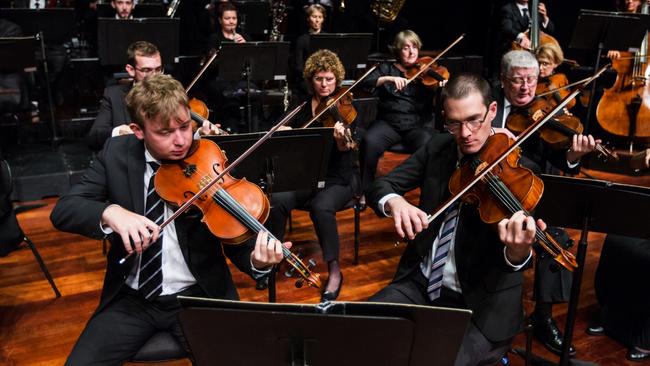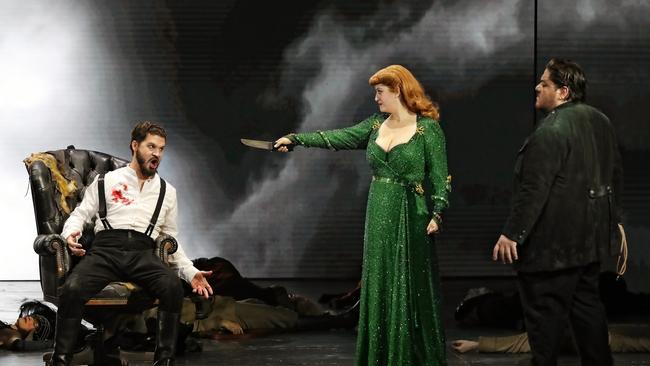Orchestral manoeuvres put musicians on standby

The ASO is now confronting what has become an unfortunate next stage in the crisis. The orchestra is negotiating with its musicians for a partial stand-down, as the ASO is unable to give live performances or earn ticket revenue while concert halls remain closed.
“We had the dubious distinction of being the first arts organisation in Australia to be directly impacted by the COVID virus,” says ASO managing director Vincent Ciccarello.
Like so many other arts organisations, the ASO has pivoted from giving live performances to producing online content in what it calls its Virtual Concert Hall. The venture provides some opportunities for solo and chamber-music performances, but is not enough to keep all musicians busy full-time.
“We are saying to the players, ‘We haven’t got 100 per cent productive work for you at the moment, but we do expect you to continue with personal practice, and be working on the projects that we have, and engaging with donors, but we do want to reduce the hours you are available to us, and there will be a commensurate reduction in pay,’” Ciccarello says. “That’s the conversation we are having now.”

The Adelaide negotiations, which Ciccarello says are transparent and collaborative, come after last week’s shock news that the Melbourne Symphony Orchestra was standing down its 88 musicians on the $1500-a-fortnight JobKeeper allowance. In a statement, MSO chairman Michael Ullmer said the board had directed management to “hibernate” the orchestra’s musicians, effective immediately.
Industry observers are stunned that the MSO has taken such drastic steps, especially when its musicians were prepared to accept a 50 per cent pay cut through to next year, and the orchestra has been assured of ongoing federal and state funding.
“They walked away from the negotiations we were having, when we thought we had received an in-principle agreement,” says Paul Davies, director of MEAA Musicians, the union representing orchestral musicians. “We thought it was a responsible approach, based on the financial analysis.”
To be eligible for JobKeeper, a not-for-profit organisation must demonstrate it has lost at least 15 per cent of its revenue. MSO managing director Sophie Galaise says the losses by the end of the year could be as high as $20 million. In 2018 terms, that would be a loss of 57 per cent of annual revenue.
“There is no work for the musicians, and we don’t have a financial position that allows us to keep paying our musicians as normal,” she says. “We looked at a pay cut... and the board decided no. It is quite clear that if we took even the lowest scenarios of a salary pay cut, and keeping everyone employed, then we would be going towards bankruptcy by the end of the year.”
The pain of the COVID-19 lockdown across the arts is acute, as dozens of arts companies large and small have struck out production plans and cancelled artist contracts. But the impact on the biggest companies is in some ways more visible, because of their scale, and often more immediate, because large companies are among the most vulnerable. The nation’s biggest performing-arts employer, Opera Australia, already has stood down most of its staff on reduced pay, starting with the musicians of the Sydney-based Opera Australia Orchestra.
Other orchestras, including the Sydney Symphony Orchestra, are negotiating with their musicians to help them survive the lockdown and the eventual return to concert-giving. The SSO says its musicians and administrative staff are finalising “company-wide discussions about new, temporary working arrangements”. The Australian Ballet’s pit orchestra, Orchestra Victoria, which also plays for Opera Australia in its Melbourne seasons, has not stood down its musicians but has brought forward their annual leave, and is exploring other options.

In Perth, the West Australian Symphony Orchestra moved swiftly into lockdown mode and has opted to redeploy its musicians — for example, producing online content, and maintaining telephone contact with orchestra patrons — rather than stand them down. It expects it will qualify for the JobKeeper subsidy for its 80 musicians and other employees. “We want our musicians to keep working,” says chief executive Mark Coughlan.
The MEAA’s Paul Davies says that, apart from the MSO negotiations, discussions between orchestra management and musicians generally has been productive as both sides try to find a way through the COVID crisis. “All other orchestras are reaching a negotiated settlement where it’s all based on consensus and agreement,” he says. “Everyone agrees there needs to be a cut, more or less. But wherever there are changes, we are having a negotiated settlement.”
The economic vulnerability of orchestras has been well documented. A famous study by William J. Baumol and William G. Bowen in the US in the 1960s found that orchestras are especially prone to “cost disease”. An orchestra of 80-plus musicians is required to play the masterworks of the romantic repertoire, just as it was in the 19th century. Unlike other industries, there are no productivity gains to be had from a smaller workforce or advances in technology.
“In the case of an orchestra, our costs are really our assets, our people,” Galaise says. “You cannot rely on productivity. If you have a plant, you can have more machines and less employees; but in our case, we start with the advantage and disadvantage of having a lot of people who are super-talented, but we need to keep a lot of people on the payroll to make sure we can deliver concerts. That’s our business model, but that’s why we are so vulnerable when things go wrong.”
In Perth, Coughlan says WASO management is planning for a 20-month period of depressed business conditions, as audiences may be slow to return to concert halls and other venues when the lockdown period ends.
He has been gratified by the support shown by WASO’s community of concert-goers during the crisis. More than 60 per cent of ticketholders have opted to donate the ticket price to the orchestra or accept a credit, rather than a refund. And after a phone call with one of WASO’s principal musicians, one patron gave a $10,000 donation.
“Our community is rallying behind us,” Coughlan says. “People have been making their annual donations earlier, and some people have been making bigger donations than usual out of solidarity, given the hard times we are going through. It’s really heartening.”



The Adelaide Symphony Orchestra was among the first of the nation’s performing arts companies to feel the pain of COVID-19. Its headline concert for the Adelaide Festival in early March, featuring composer-conductor Brett Dean, was upset when Dean, returning to Australia from overseas, was diagnosed with coronavirus and quarantined at the Royal Adelaide Hospital. Conductor Richard Mills stepped in to conduct the Sound of History concert, marking the 250th anniversary of Beethoven’s birth. Another concert featuring former principal conductor Nicholas Carter was cancelled after Carter came into contact with someone with the virus.